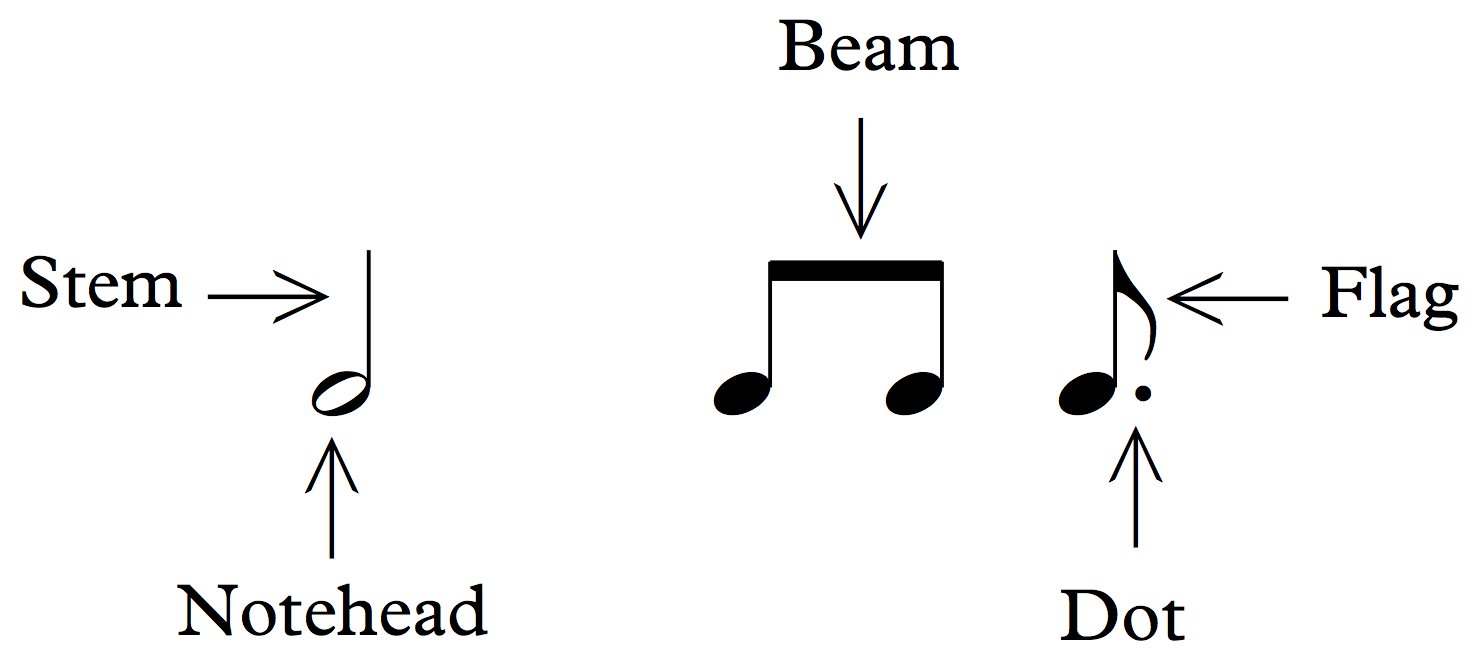Integrated Music Theory 2018-19
Discussion 1a - Pitches and Clefs
Class Discussion
-Clefs limit the excessive use of ledger lines; they also save publishers money on ink
Clef reading tips:
-Find the note the clef encircles and work from there, this is safe but slow
-Figure out the first note and read melodic lines based on intervals, this can be derailed by one mistake
-Relate the unfamiliar clef to the one you know best and then rely on your visual prowess
-Transpose! This may be more relevant for instrumentalists that practice this
-Tenor and Alto clefs can be thought of as opposites. Tenor clef is lower sounding, but read as if it is higher than treble clef, Alto Clef is higher sounding, but is read lower than treble clef
-Imagine your familiar clef as if it is encircling a new line and read it as you know it from there
Further Reading
From Open Music Theory
Notes
When written on a staff, a note indicates a pitch and rhythmic value. The notation consists of a notehead (either empty or filled in), and optionally can include a stem, beam, dot, or flag.

Staff
Notes can’t convey their pitch information without being placed on a staff. A staff consists of five horizontal lines, evenly spaced. The plural of staff is staves.
Clefs
Notes still can’t convey their pitch information if the staff doesn’t include a clef. A clef indicates which pitches are assigned to the lines and spaces on a staff. The two most commonly used clefs are the treble and bass clef; others that you’ll see relatively frequently are alto and tenor clef.
Grand staff
The grand staff consists of two staves, one that uses a treble clef, and one that uses a bass clef. The staves are connected by a curly brace. Grand staves are used frequently for notating piano music and other polyphonic instruments.
Ledger lines
When the music’s range exceeds what can be written on the staff, extra lines are drawn so that we can still clearly read the pitch. These extra lines are called ledger lines. In the example below, From Haydn’s Piano Sonata in G (Hob. XVI: 39), A-flat5 occurs just above the treble staff in the right hand, and G3 and B3 occur just below the treble staff in the left hand.

Accidentals
Accidentals are used to indicate when a pitch has been raised or lowered. They are written to the left of the pitch.
- When you lower one of the white notes of the piano by a semitone, you add a flat.
- When you raise one of the white notes of the piano by a semitone, you add a sharp.
- When you raise a note that is already flat by a semitone, you add a natural.
- When you lower a note that is already flat by a semitone, you add a double flat.
- When you raise a note that is already sharp by a semitone, you add a double sharp.
The example below shows the symbols for flat, natural, sharp, double sharp, and double flat, respectively.
